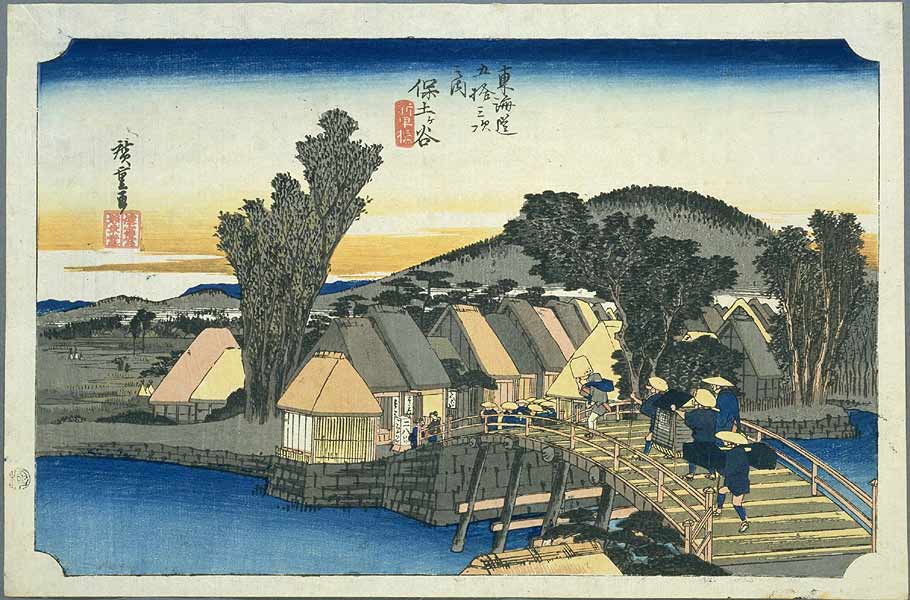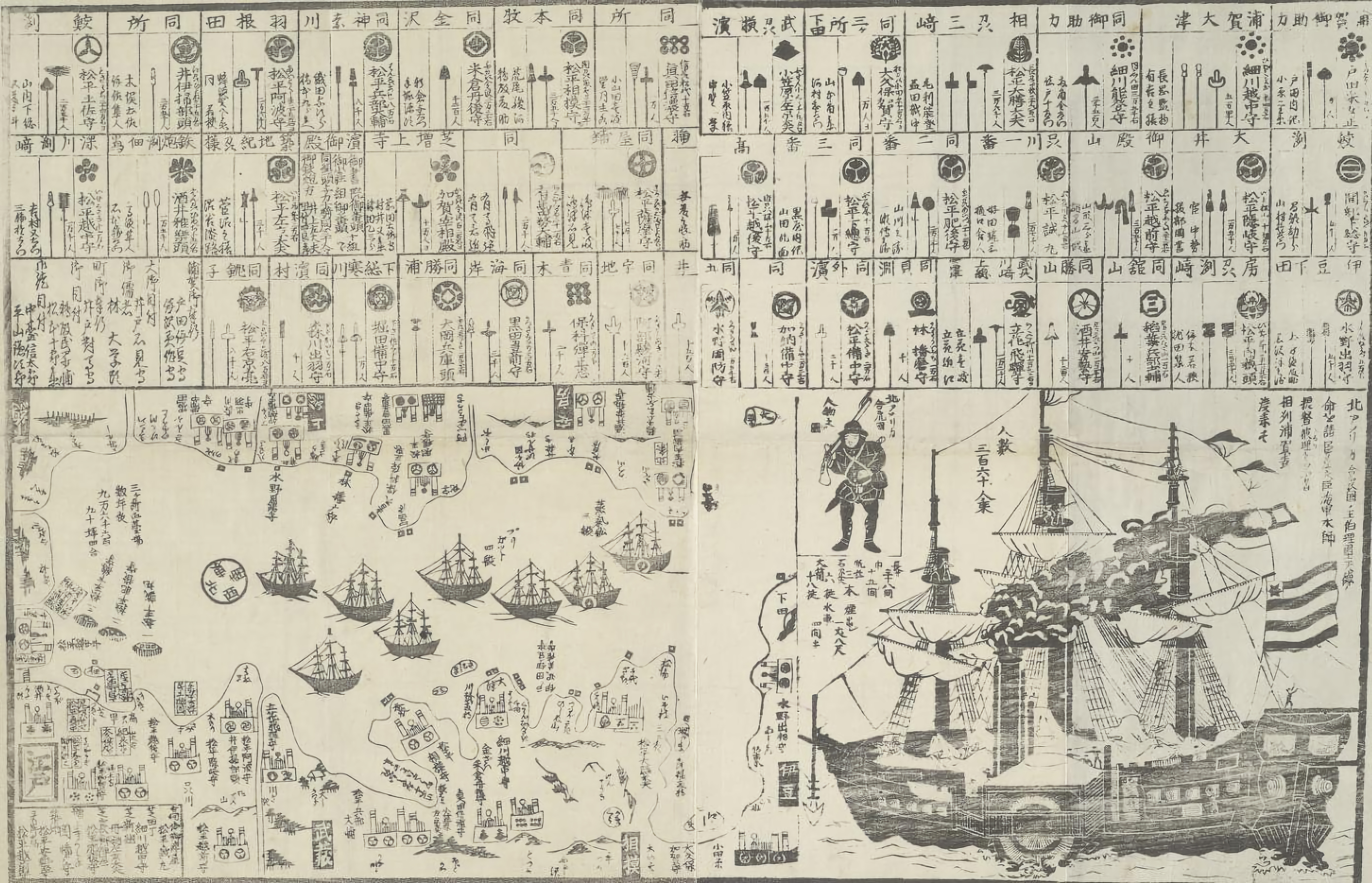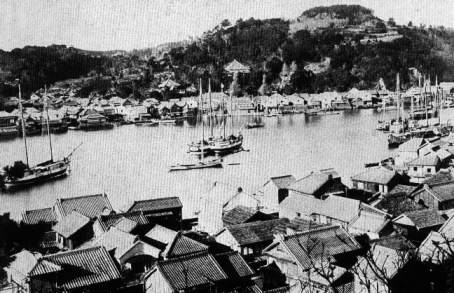|
Totsuka-juku
was the fifth of the 53 Stations of the Tōkaidō, fifty-three stations (''shukuba'') of the Tōkaidō (road), Tōkaidō. It was the easternmost post station in Sagami Province. It is now located in Totsuka-ku, Yokohama, Totsuka-ku in the present-day city of Yokohama, Kanagawa, Yokohama, Kanagawa Prefecture, Japan. History Because Totsuka-juku was approximately one day's journey from Nihonbashi, it was a very common resting place for travelers at the start of the journey and the largest post station after Odawara-juku.Tōkaidō to Totsuka-juku Yokohama City Hall. Accessed December 10, 2007. Because of its size, there were two ''honjin'' in the post station as well, one belonging to the Sawabe family (澤辺) and the other belonging to the Uchida family (内田). Another reason for Totsuka-juku being so large wa ... [...More Info...] [...Related Items...] OR: [Wikipedia] [Google] [Baidu] |
Fujisawa-shuku
was the sixth of the fifty-three stations of the Tōkaidō. It is located in the present-day city of Fujisawa, Kanagawa Prefecture, Japan. History Fujisawa-shuku was established as a post station on the Tōkaidō in 1601, but did not become the sixth post station until Totsuka-juku was later established. Before the establishment of the Tōkaidō, Fujisawa flourished as a for Shōjōkō-ji, also known as " Yugyō-ji" (), the head temple of the Ji-sect of Japanese Buddhism. It was also located on a fork along the Odawara Kaidō, which connected Odawara Castle and its two supporting castles, Edo Castle and Hachiōji Castle during the period of the Late Hōjō clan. The toward Edo was to the east of Yugyō-ji, and the gate towards Kyoto was on the western side of the modern Odakyū Enoshima Line; these boundaries mark the general limits of Fujisawa-juku. It was said that there were over 1,000 buildings in the post town, including ''honjin'', ''hatago'', etc. [...More Info...] [...Related Items...] OR: [Wikipedia] [Google] [Baidu] |
Hodogaya-juku
was the fourth of the fifty-three stations of the Tōkaidō. It is located in Hodogaya-ku in the present-day city of Yokohama, Kanagawa Prefecture, Japan. Occasionally, it is also written as . History Hodogaya-juku was established in 1601, and it was the westernmost post station in Musashi Province during the Edo period. The ''honjin'' still belongs to the same family today as the one that owned it when it was first opened. Additionally, there is a stone Buddha statue that travelers often prayed to for safety while traveling along the Tōkaidō.''The stone Buddha and Pagoda'' . Yokohama City Hall. Accessed December 10, 2007. The classic print by |
Totsuka-ku, Yokohama
is one of the 18 wards of the city of Yokohama in Kanagawa Prefecture, Japan. As of 2010, the ward had an estimated population of 273,418 and a density of 7,640 persons per km2. The total area was 35.70 km2. Geography Totsuka Ward is located in eastern Kanagawa Prefecture, and in the center-western area of the city of Yokohama. The area is largely flatland, with scattered small hills. The Kashio River passes through the Ward. Surrounding municipalities * Sakae Ward * Hodagaya Ward *Minami Ward * Asahi Ward * Kōnan Ward * Izumi Ward *Kamakura * Fujisawa History The area around present-day Totsuka Ward has been inhabited for thousands of years. Archaeologists have found ceramic shards from the Jōmon period at numerous locations in the area. There are numerous keyhole tombs from the Kofun period in Totsuka, including one on the grounds of Tomizuka Hachiman Shrine, from which the ward's name is derived. Under the Nara period Ritsuryō system, it became part of Kamakura Dis ... [...More Info...] [...Related Items...] OR: [Wikipedia] [Google] [Baidu] |
53 Stations Of The Tōkaidō
The are the rest areas along the Tōkaidō, which was a coastal route that ran from Nihonbashi in Edo (modern-day Tokyo) to Sanjō Ōhashi in Kyoto.. There were originally 53 government post stations along the Tōkaidō, where travelers had to present traveling permits at each station if wanting to cross. In 1619, the Ōsaka Kaidō (大阪街道) was developed to extend the Tōkaidō so that it would reach Kōraibashi in modern-day Osaka. Instead of going to Sanjō Ōhashi, travelers would leave from Ōtsu-juku and travel towards Fushimi-juku. Because of the addition of these four post towns, the Tōkaidō is occasionally referred to as having 57 stations. Another name for this extension was Kyōkaidō (京街道). The inland Nakasendō also started at Nihonbashi, and converged with the Tōkaidō at Kusatsu-juku. Shio no Michi intersected with the Tōkaidō at Okazaki-shuku. Stations of the Tōkaidō See also * Edo Five Routes ** 69 Stations of the Nakase ... [...More Info...] [...Related Items...] OR: [Wikipedia] [Google] [Baidu] |
Bakumatsu Period
was the final years of the Edo period when the Tokugawa shogunate ended. Between 1853 and 1867, Japan ended its isolationist foreign policy known as and changed from a feudal Tokugawa shogunate to the modern empire of the Meiji government. The major ideological-political divide during this period was between the pro-imperial nationalists called and the shogunate forces, which included the elite swordsmen. Although these two groups were the most visible powers, many other factions attempted to use the chaos of to seize personal power.Hillsborough, ''page # needed'' Furthermore, there were two other main driving forces for dissent: first, growing resentment on the part of the (or outside lords), and second, growing anti-Western sentiment following the arrival of Matthew C. Perry. The first related to those lords whose predecessors had fought against Tokugawa forces at the Battle of Sekigahara in 1600, after which they had been permanently excluded from all powerfu ... [...More Info...] [...Related Items...] OR: [Wikipedia] [Google] [Baidu] |
Parody
A parody, also known as a spoof, a satire, a send-up, a take-off, a lampoon, a play on (something), or a caricature, is a creative work designed to imitate, comment on, and/or mock its subject by means of satiric or ironic imitation. Often its subject is an original work or some aspect of it (theme/content, author, style, etc), but a parody can also be about a real-life person (e.g. a politician), event, or movement (e.g. the French Revolution or 1960s counterculture). Literary scholar Professor Simon Dentith defines parody as "any cultural practice which provides a relatively polemical allusive imitation of another cultural production or practice". The literary theorist Linda Hutcheon said "parody ... is imitation, not always at the expense of the parodied text." Parody may be found in art or culture, including literature, music, theater, television and film, animation, and gaming. Some parody is practiced in theater. The writer and critic John Gross observes in his ''Oxford Boo ... [...More Info...] [...Related Items...] OR: [Wikipedia] [Google] [Baidu] |
Senryū
is a Japanese form of short poetry similar to haiku in construction: three lines with 17 (or , often translated as syllables, but see the article on for distinctions). tend to be about human foibles while haiku tend to be about nature, and are often cynical or darkly humorous while haiku are more serious. Unlike haiku, do not include a (cutting word), and do not generally include a , or season word. Form and content is named after Edo period poet , whose collection launched the genre into the public consciousness. A typical example from the collection: This , which can also be translated "Catching him / I see the robber / is my son," is not so much a personal experience of the author as an example of a type of situation (provided by a short comment called a or fore-verse, which usually prefaces a number of examples) and/or a brief or witty rendition of an incident from history or the arts (plays, songs, tales, poetry, etc.). English-language publications In the 1 ... [...More Info...] [...Related Items...] OR: [Wikipedia] [Google] [Baidu] |
Andō Hiroshige
Utagawa Hiroshige (, also ; ja, 歌川 広重 ), born Andō Tokutarō (; 1797 – 12 October 1858), was a Japanese ''ukiyo-e'' artist, considered the last great master of that tradition. Hiroshige is best known for his horizontal-format landscape series ''The Fifty-three Stations of the Tōkaidō'' and for his vertical-format landscape series ''One Hundred Famous Views of Edo''. The subjects of his work were atypical of the ''ukiyo-e'' genre, whose typical focus was on beautiful women, popular actors, and other scenes of the urban pleasure districts of Japan's Edo period (1603–1868). The popular series '' Thirty-six Views of Mount Fuji'' by Hokusai was a strong influence on Hiroshige's choice of subject, though Hiroshige's approach was more poetic and ambient than Hokusai's bolder, more formal prints. Subtle use of color was essential in Hiroshige's prints, often printed with multiple impressions in the same area and with extensive use of '' bokashi'' (color gradation), ... [...More Info...] [...Related Items...] OR: [Wikipedia] [Google] [Baidu] |
Ukiyo-e
Ukiyo-e is a genre of Japanese art which flourished from the 17th through 19th centuries. Its artists produced woodblock prints and paintings Painting is the practice of applying paint, pigment, color or other medium to a solid surface (called the "matrix" or "support"). The medium is commonly applied to the base with a brush, but other implements, such as knives, sponges, and ai ... of such subjects as female beauties; kabuki actors and sumo wrestlers; scenes from history and folk tales; travel scenes and landscapes; Flora of Japan, flora and Wildlife of Japan#Fauna, fauna; and Shunga, erotica. The term translates as "picture[s] of the floating world". In 1603, the city of Edo (Tokyo) became the seat of the ruling Tokugawa shogunate. The ''chōnin'' class (merchants, craftsmen and workers), positioned at the bottom of Four occupations, the social order, benefited the most from the city's rapid economic growth, and began to indulge in and patronise the entertainment o ... [...More Info...] [...Related Items...] OR: [Wikipedia] [Google] [Baidu] |
Black Ships
The Black Ships (in ja, 黒船, translit=kurofune, Edo period term) was the name given to Western vessels arriving in Japan in the 16th and 19th centuries. In 1543 Portuguese initiated the first contacts, establishing a trade route linking Goa to Nagasaki. The large carracks engaged in this trade had the hull painted black with pitch, and the term came to represent all Western vessels. In 1639, after suppressing a rebellion blamed on the influence of Christian thought, the ruling Tokugawa shogunate retreated into an isolationist policy, the Sakoku. During this "locked state", contact with Japan by Westerners was restricted to Dejima island at Nagasaki. In 1844, William II of the Netherlands urged Japan to open, but was rejected. On July 8, 1853, the U.S. Navy sent four warships into the bay at Edo and threatened to attack if Japan did not begin trade with the West. Their arrival marked the reopening of the country to political dialogue after more than two hundred years of ... [...More Info...] [...Related Items...] OR: [Wikipedia] [Google] [Baidu] |
Uraga Harbor
is a subdivision of the city of Yokosuka, Kanagawa Prefecture, Japan. It is located on the south eastern side of the Miura Peninsula, at the northern end of the Uraga Channel, at the entrance of Tokyo Bay. History With the establishment of the Tokugawa shogunate based in Edo at the start of the 17th century, the small village of Uraga developed rapidly due to its sheltered harbor and strategic location at the entrance of Edo Bay. The area was ''tenryō'' territory under direct control of the shogunate, and the increase in maritime traffic led to the development of merchant and trading firms in the area. In 1720, the shogunate established the post of '' Uraga bugyō'', whose responsibility was to police traffic and to organize coastal defenses, and the entrances to the harbor were fortified with cannon against possible incursions by foreign ships in violation of Japan’s national isolation policy. Still, in 1812, the British whaler stopped at Uraga and took on water, food, an ... [...More Info...] [...Related Items...] OR: [Wikipedia] [Google] [Baidu] |







_Awa_Naruto_no_fuukei.jpg)


